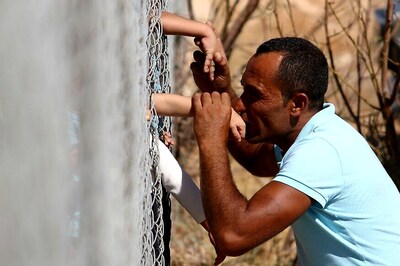
views
When Justin Welby, the archbishop of Canterbury, prostrated in front of the Jalianwala Bagh memorial on September 10, the picture made it to eight columns of the front page of The Times, London, just as the news was received with a sense of awe around India and Britain.
The apology that Welby, who is the seniormost bishop of the Church of England, offered was generous and full of humility. “Coming here arouses a profound sense of shame at what happened in this place,” he said. He also recognised the “sins of the British colonial history” whose ideology too often “subjugated and dehumanised other races and cultures.”
Welby hurried to add that the apology was not being offered on behalf of the government, but it very clearly lays the ground for a formal government apology for the Jalianwala Bagh massacre in April 1919. Previous visiting British PMs have stopped short of any apology but have expressed some sort of remorse at the event. Now that the high priest of the Church of England has set the tone of acceptance and apology, it makes things easier for a formal government apology some time later on.
The Church of England is the official church of UK where, unlike in India, the powers of state and church are not fully divided, yet. All official functions like coronations, funerals of ministers and queens and princess are by law officiated by the archbishop who has a semi-official status. This makes the apology all the more significant.
There has been some sort of quasi-official demand from India for a formal apology, but the reason why the British have stopped short of it is because then there will be no end to the apologies the British will have to offer for the criminal excesses of the colonial rule, starting mostly after the 1857 revolt. Such an apology may be followed, for instance, by the demand for the return of the Kohinoor, especially when ultra-nationalism is being whipped up by the present regime.
New historical evidences, however, point to the fact that Jalianwala Bagh was the culmination of a 75-year period of utmost cruelty unleashed by the British mostly in Punjab following the 1857 mutiny. According to Kim Wagner’s just released book, Jalianwala Bagh, every act of protest of rebellion since then was written up as an act of extreme danger to the British, and the culprits were rounded up and butchered, shot or mutilated. In 1872, when there was an unplanned, meaningless and minor attack on Muslims by Namdharii Sikhs, about 200 Sikhs were rounded up and shot dead or shot with canons.
Around that time the lieutenant governor of Punjab, Sir Robert Henry Davies, said: “Blowing from a gun is an impressive and merciful manner of execution, well-calculated to strike terror into the bystanders.”
The British response to the Kuka (Namdhari) rebellion was very much shaped by the memory of 1857, according to Wenger. So was Jalianwala Bagh where the immediacy and the brutality of the execution was buttressed by many weeks of fear mongering by deputy commissioner of Amritsar, John Irving, and others who were most worried by the sight of Muslims joining up with Hindus in the celebration of Ram Navomi just prior to the protest meeting at Jalianwala Bagh
The revolters of 1857 were mostly tied to the canon and shot in Old Delhi, one of the main perpetrators being Nicholson whose name is still shamefully celebrated in India, with the cemetery still in his name in Old Delhi. Another famous colonial author John W Kaye, who is still celebrated in India and whose histories of the mutiny are still studied in India, has described the efficacies of such executions thus: “To our newly raised levies and to the curious on-looker from the country, the whole spectacle was a marvel and a mystery. It was a wonderful display of moral force and made a deep and abiding impression.”
So the reaction and the bloody repression that followed in 1857 and its memory kept alive through half a century of British documentation and discussion lay at the root of the 1919 massacre of 400 innocents, according to Wenger. Even though the hartal (strike) and the protests that led to the meeting were due to the nationwide hartal call by Gandhi to protest against the Rowlatt Act, in Amritsar the hartal and protest meetings had taken a life of their own due to the fervent leadership of Kichlew and Satyapal. The deputy commissioner of Amritsar, Irving, was especially responsible for whipping up a fear psychosis which laid the ground for O’Dyer to do the honours.
So the apology offered by the religious head of Britain has a significance that goes beyond what has been perceived. While the history of the economic, social, political brutality of Empire has been gaining new perspective in the recent past, the latest being William Dalrymple’s The Anarchy, not counting Wenger’s and other accounts of the Amritsar massacre published early this year, will also help in a formal relook by Britain on the question of statist apology.
But for a Christian priest, apology comes easier since its part of the philosophy of his religion. Indian governments, which have taken a moral high ground on the Jalianwala Bagh issue, have refused to apologise for major crimes committed on its own people over the years since Independence. So perspectives can differ.
(The author is a senior journalist. Views expressed are personal)




















Comments
0 comment